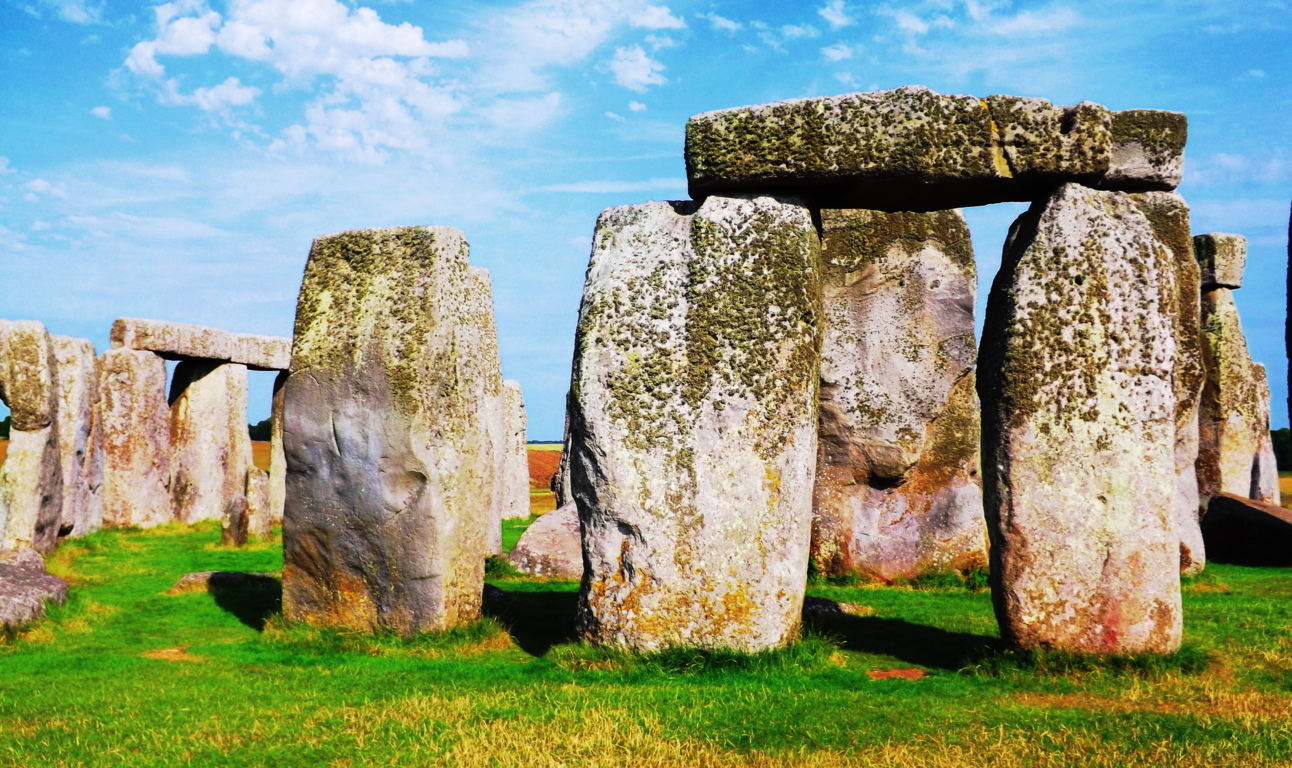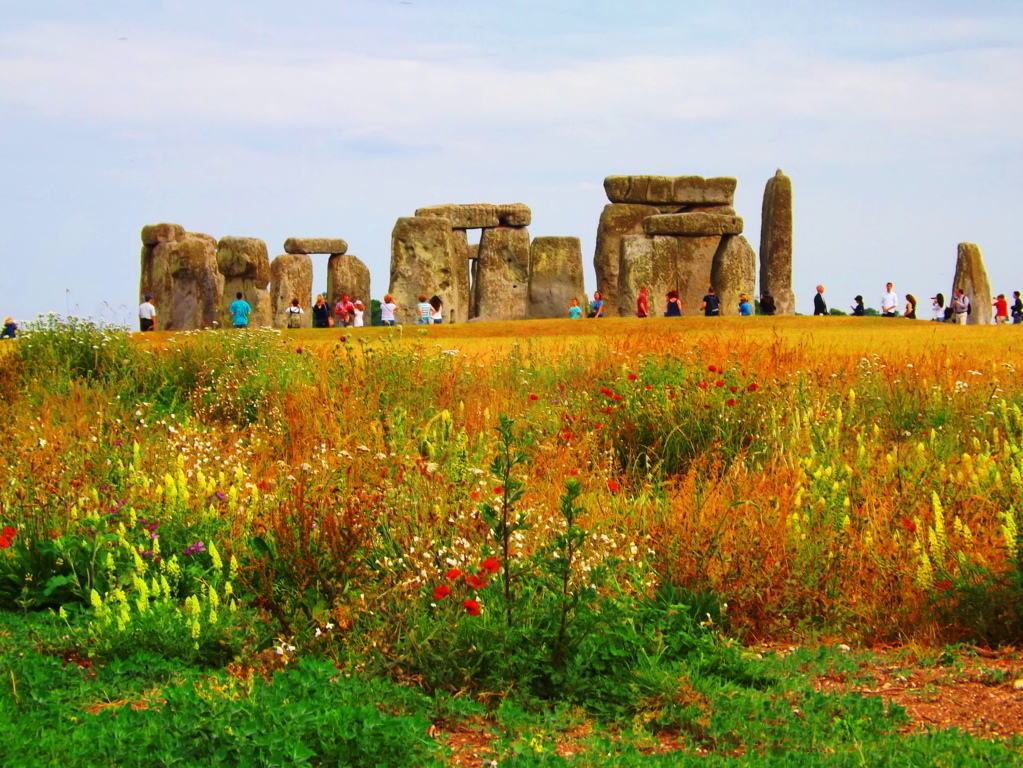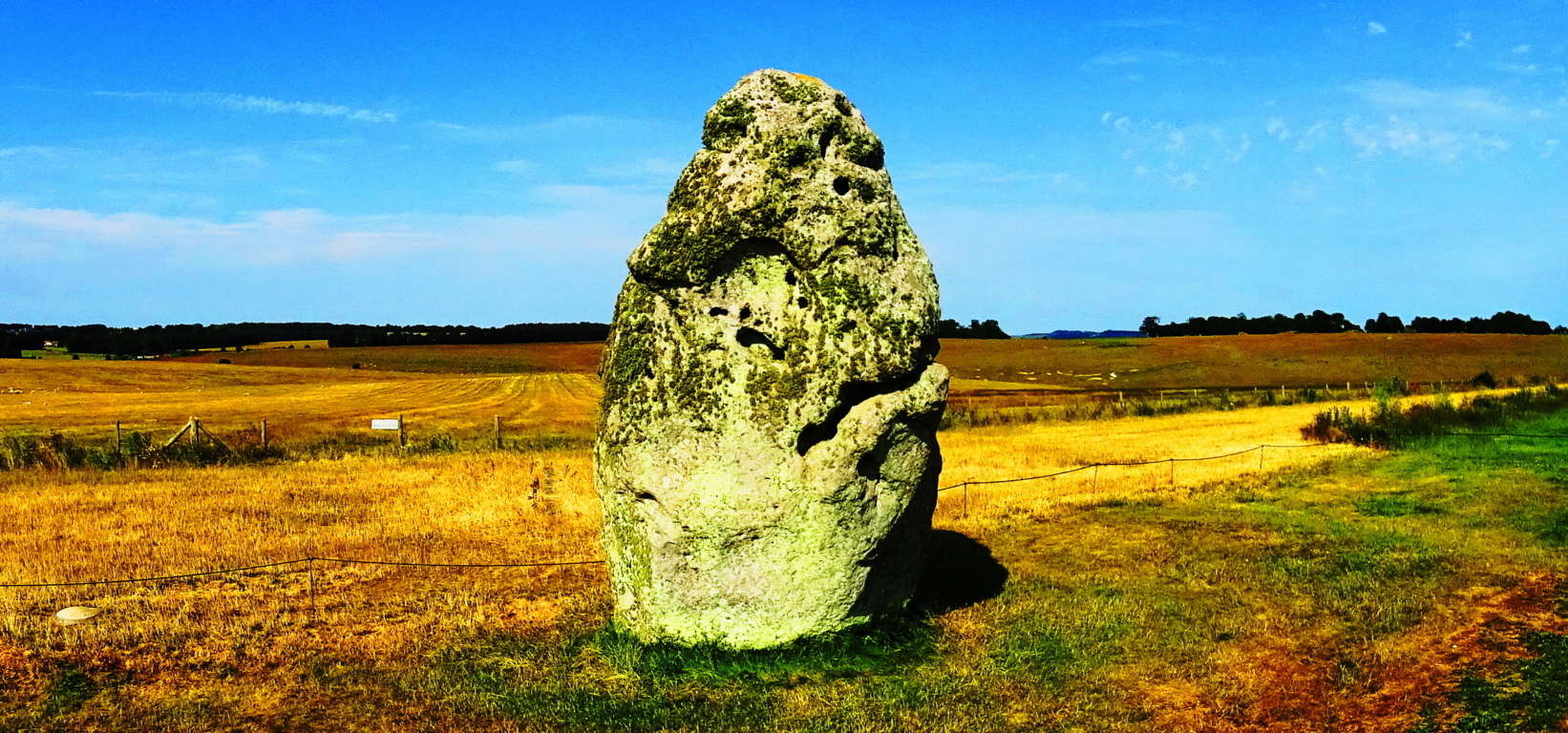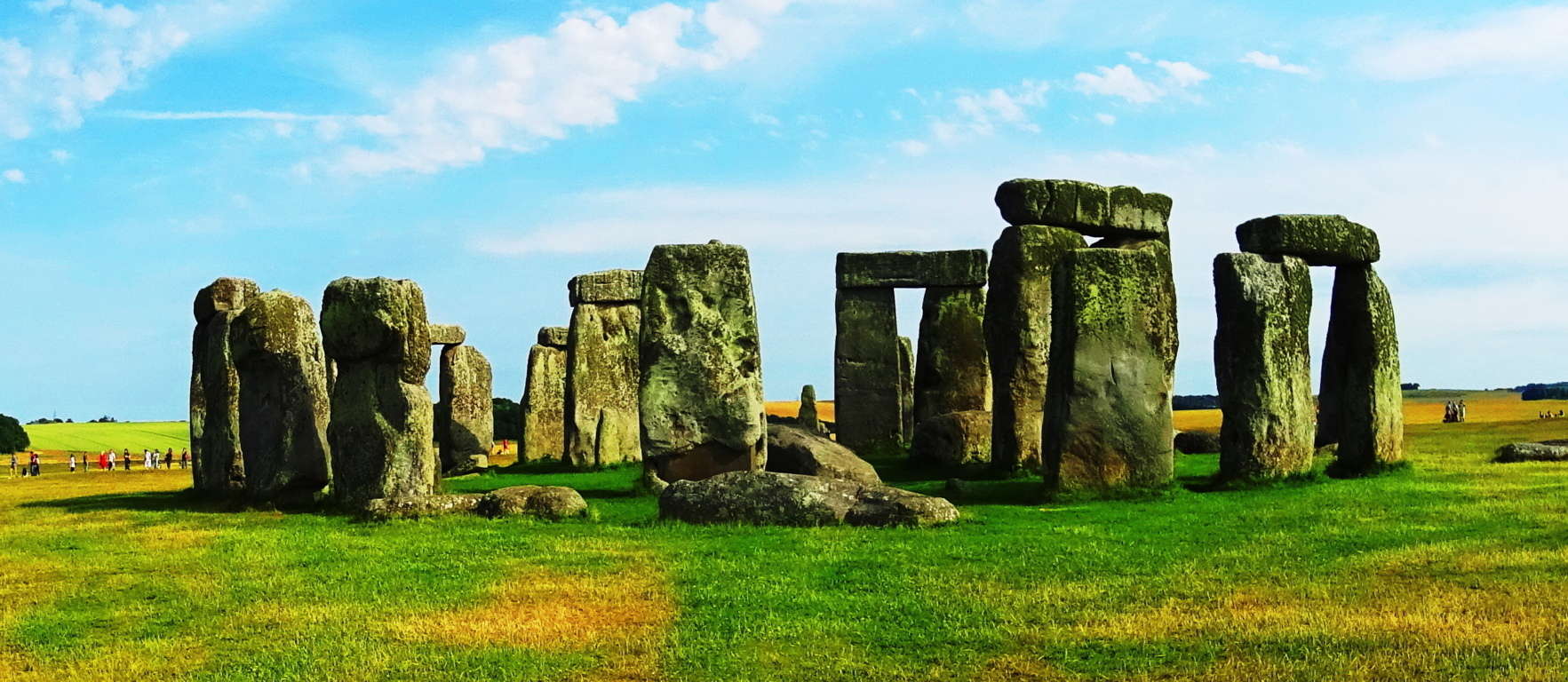Stonehenge
Note: Imagine yourself walking on a broad plateau surrounded by miles of grass and swaying brush. Continue to imagine that you are curious enough to seek out the best elevation among these vast fields, following the slight incline, continually heading upward. You begin to see something distinct just above the landscape, off in the distance. At about 400 feet away you glimpse something entirely impossible. There before you are several circular stone enclosures towering above you. The hallowed presentation of the area is hard to comprehend, even in broad daylight. It is not a disheveled scene, but rather, a highly organized, dynamic and symmetric presentation, like a temple. You then realize, all at once, that you may be looking at the first temple on earth. If you don’t turn away in fear, your mind, whether it is that of a passing farmer, saint, knight, Celtic king, or simple serf of times past, will inevitably reach for that first logical question asked for thousands of years before: how? How did this happen? Let’s fast forward and look at some of the modern observations. The external ring is made up of Sarsen stone, each standing 30 feet high, at 25 tons each. This exterior ring looks to be incomplete, as only 16 of the original Sarsen stones are in place, while there is a significant gap on the opposite end. Was the ring ever fully completed? If it was finished, how could some stones then disappear? A secondary ring of 43 Blue Stones are distinct but also obviously incomplete, within the larger Sarsens. Some believe that there were as many as 80 Blue Stones originally. They weigh roughly 2 to 4 tons each, and were believed to be inserted thousands of years after the Sarsens. A third set of Lintel Stones are laid across the top of the Sarsens in different areas, revealing the intended circularity of the enclosure. The Lintels are not free-sitting, but are placed into grand notches that are carved into the top of the Sarsens, revealing yet another miraculous feat of engineering, besides the placement of the stones themselves. Lastly, at the innermost section of the rings of stone, are the five domineering Trilithons, set in a “horshoe” style configuration, including the lintels above them, weighing 50 colossal tons each. I was lucky enough to walk the grounds of Stonehenge on a sunny day, and got the best images I could, shown here. It was just as moving to step away and see others sizing up the scene, perhaps realizing, as I did, their own humanity; Perceiving that these stones have been here long before they were born, and will be there long after they are gone.
This exterior ring looks to be incomplete, as only 16 of the original Sarsen stones are in place, while there is a significant gap on the opposite end. Was the ring ever fully completed? If it was finished, how could some stones then disappear? A secondary ring of 43 Blue Stones are distinct but also obviously incomplete, within the larger Sarsens. Some believe that there were as many as 80 Blue Stones originally. They weigh roughly 2 to 4 tons each, and were believed to be inserted thousands of years after the Sarsens. A third set of Lintel Stones are laid across the top of the Sarsens in different areas, revealing the intended circularity of the enclosure. The Lintels are not free-sitting, but are placed into grand notches that are carved into the top of the Sarsens, revealing yet another miraculous feat of engineering, besides the placement of the stones themselves. Lastly, at the innermost section of the rings of stone, are the five domineering Trilithons, set in a “horshoe” style configuration, including the lintels above them, weighing 50 colossal tons each. I was lucky enough to walk the grounds of Stonehenge on a sunny day, and got the best images I could, shown here. It was just as moving to step away and see others sizing up the scene, perhaps realizing, as I did, their own humanity; Perceiving that these stones have been here long before they were born, and will be there long after they are gone. Research continues regarding the meaning of this mystical place. Recent discoveries have revealed that Stonehenge is part of a grander overall context of ‘spiritual monuments’ once built into the land. Remnants of what is now being called “Woodhenge” has been found a few miles away, built in similar fashion to Stonehenge, near to the river Avon. Compelling theories about the ancient Britons utilizing Woodhenge as a temple to the living (cultural association with wood), which moves up along the River Avon in a procession towards Stonehenge (stone being culturally associated with the dead) in a ceremonial celebration of existence, have been put forward. Many researchers also believe Stonehenge was built as a type of ‘celestial clock’, marking the Summer and Winter Solstices for eternity. Another feature of the area is a beautiful ten foot high Standing Stone perched roughly 70 yards away from the Sarson circle. This stone, with its nodules and indented creases, looks somehow older than the Sarsons in the distance. It clearly looks as if it were standing guard over the area, warning passers by that the area is flat-out sacred, and to act accordingly.
Research continues regarding the meaning of this mystical place. Recent discoveries have revealed that Stonehenge is part of a grander overall context of ‘spiritual monuments’ once built into the land. Remnants of what is now being called “Woodhenge” has been found a few miles away, built in similar fashion to Stonehenge, near to the river Avon. Compelling theories about the ancient Britons utilizing Woodhenge as a temple to the living (cultural association with wood), which moves up along the River Avon in a procession towards Stonehenge (stone being culturally associated with the dead) in a ceremonial celebration of existence, have been put forward. Many researchers also believe Stonehenge was built as a type of ‘celestial clock’, marking the Summer and Winter Solstices for eternity. Another feature of the area is a beautiful ten foot high Standing Stone perched roughly 70 yards away from the Sarson circle. This stone, with its nodules and indented creases, looks somehow older than the Sarsons in the distance. It clearly looks as if it were standing guard over the area, warning passers by that the area is flat-out sacred, and to act accordingly. These “guardian stones” can be found near Dolmens and Wedge Tombs all across the Celtic world, standing at the periphery of sacred areas as warnings that visitors are entering a sacred space. This phenomenon exists also in New England, but in the form of free-sitting boulders. Boulders will be placed peripherally, strategically, to corner off a section of forest, cliff, or mountain plateau, in order to make passers-by aware that the area they enter contains sacred features. All of this could have originated at Stonehenge. The original myths and stories of the English country-folk say that giants are the builders of Stonehenge. Ceremonies of Celtic Kings and tribal leaders have taken place within this sacred circle for as long as recorded time has existed, including fantastic tales of Merlin and King Arthur intertwined with the history. Today it is an internationally protected historical site, with a museum and bus that runs along the hills up to the site for a ticket price. You also have the option to walk if you so choose. Stonehenge is the epitome and origin of everything magical about megaliths, once you see it, you cannot help but realize that so many wonderful things are still left to be understood. If you can, I hope you will give yourself that chance.
These “guardian stones” can be found near Dolmens and Wedge Tombs all across the Celtic world, standing at the periphery of sacred areas as warnings that visitors are entering a sacred space. This phenomenon exists also in New England, but in the form of free-sitting boulders. Boulders will be placed peripherally, strategically, to corner off a section of forest, cliff, or mountain plateau, in order to make passers-by aware that the area they enter contains sacred features. All of this could have originated at Stonehenge. The original myths and stories of the English country-folk say that giants are the builders of Stonehenge. Ceremonies of Celtic Kings and tribal leaders have taken place within this sacred circle for as long as recorded time has existed, including fantastic tales of Merlin and King Arthur intertwined with the history. Today it is an internationally protected historical site, with a museum and bus that runs along the hills up to the site for a ticket price. You also have the option to walk if you so choose. Stonehenge is the epitome and origin of everything magical about megaliths, once you see it, you cannot help but realize that so many wonderful things are still left to be understood. If you can, I hope you will give yourself that chance.
